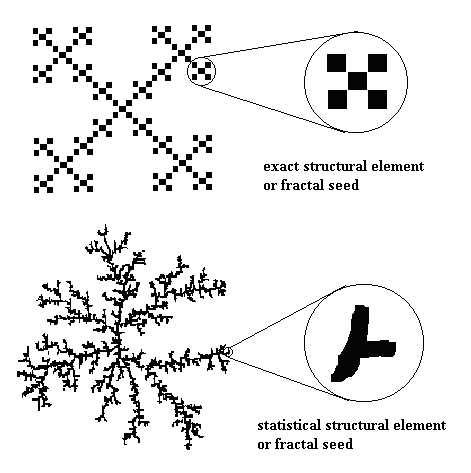Fractals In Nature
It’s clear from decades worth of research that engaging with nature has a positive impact on our well-being, particularly in decreasing our stress and allowing our attention to recover (just google “Stress Reduction Theory” or “Attention Restoration Theory” for more info).
What’s still trying to be determined is exactly why this is the case. What exactly is it about engaging with nature that has such a positive impact on us as humans?
The answer is probably many, many things all happening at the same time. But one of my favorite ideas about how nature may be impacting us is that it may have something to do with fractals.
What’s a Fractal?
Defining exactly what a fractal is seems to be difficult, even for mathematicians. And seeing as how I’m a therapist and not a mathematician, I won’t pretend to be able to define it exactly.
But in talking about nature, what we generally mean by fractals are those repeating patterns that happen at different scales, especially when there is self-similarity. In other words, when there is a shape happening at one scale that then repeats again when you zoom in to a closer scale, and then again when you zoom in to a closer scale again.
It’s easier to see than to describe in words, so here are some simple examples:
Statistical Fractals
All fractals have this same kind of repetition of a pattern or shape at closer and closer scales. Some fractals, like the simple ones above, mathematically repeat exactly the same pattern as you zoom in. Others, however, are what’s known as statistical fractals, where there’s a bit of randomness involved and the repetition is not exact.
This statistical fractal kind of repetition is what we find in nature.
A pattern or shape repeats at smaller and smaller scales, but not exactly.
Here’s a good comparison, with the exactly repeating fractal on top and the statistical fractal (the one with some randomness thrown in) on the bottom:
image taken from https://www.intechopen.com/chapters/41469
Fractal Dimension
Another feature about fractals that’s important in order to understand our relationship to fractals in nature is something called dimension. This is a way of measuring the complexity level of a fractal, from 1 to 2.
To give you some idea of the scale, a dimension (D) value of 1 is just a straight line. There’s not much complexity there. A D-value of 2 is a solid square. There’s so much complexity that it takes up the whole space.
As it turns out, many things in nature fall into the range of between 1.3 and 1.5, a kind of mid-range level of complexity.
Natural Fractals and Mental Health
So let’s pull this together and see what all this means for our mental health.
It turns out that people show decreased stress levels, measured through skin conductance, when viewing images involving statistical fractals with a D-value between 1.3 and 1.5.
Not only that, but studies looking at EEG measurements of brain waves find that looking at images of statistical fractals in this same 1.3 to 1.5 range leads to an increase in alpha wave activity. Alpha waves indicate a state of relaxed wakefulness.
What all this points to is that just seeing the many different fractal patterns that tend to show up in nature may have the effect of putting us into a state of calm, relaxed attentiveness.
If you’d like to dig deeper into these ideas, check out the work of Richard Taylor, professor of physics, psychology, and art at the University of Oregon.
In the meantime, may you find these examples of fractals in nature calming and restorative:
If you’d like to try focusing on your mental health in an outdoor setting you may be interested in Hiking Therapy. Feel free to contact me to learn more.









